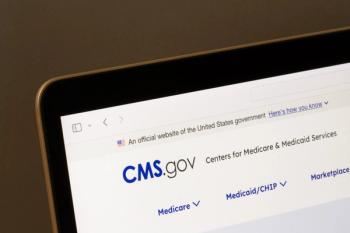
Efficient resource management in system-wide pharmacy operations
System-wide medication visibility can be key to delivering the highest levels of patient safety at the lowest possible cost.
Shrinking and inconsistent reimbursements, coupled with the need for best use of pharmacy resources, now require hospitals and health systems to reassess their pharmacy operations, which can represent up to 10% of operating expense. The goal is to deliver the highest levels of patient safety at the lowest possible cost.
Pharmacy departments have long made use of pharmacy automation to maximize patient safety, ensure accurate charge capture, and achieve high service levels for nursing and patients. However, they have not yet focused on optimization of pharmacy’s medication logistics and enterprise-wide processes.
This broader focus requires management of the movement of medications from “dockside to bedside” in the most efficient way possible, to improve the bottom line of the pharmacy - one of the highest non-labor cost centers in a health system.
The five rights - and more
To date, the primary focus of medication management strategies and pharmacy automation technologies has been to ensure the achievement of the “five rights” of medication administration: the right patient, the right drug, the right dose, the right route, and the right time.
Cost. In the uncertain world of the Affordable Care Act, this driver is no longer enough. Pharmacies also need to deliver medications at the “right cost” to the organization. By expanding their focus to an enterprise-wide view, pharmacists can gain control of the medication supply chain to achieve more efficient and effective processes for procurement, receiving, storage, and inventory management.
Storage. Consider how traditional storage models within individual pharmacies in a health system house medications on static open shelves, arranged alphabetically or by drug type. Since many doses have to be filled from multiple areas of the pharmacy, this traditional approach requires staff to move from location to location to find the needed medications. More efficient storage methods, such as those offered through automated storage and dispensing systems, consolidate inventory and arrange drugs by velocity, enabling more efficient and safe acquisition.
Inventories. Another barrier to efficient pharmacy operations is the lack of visibility into medication inventories across a health system’s entire network of pharmacies. Manual, time-consuming processes for tracking stock levels limit the efficacy of strategies used to manage inventory turns and minimize waste. Drug shortages compound this challenge, as pharmacies will often err on the side of over-purchasing in terms of both quantity and cost to ensure they have enough of the particular drug needed.
Visibility. Several health systems are leveraging single, centralized views of medication inventory across an enterprise to enable more informed decision-making in their pharmacies. Access to real-time views of existing medication inventory, as well as usage trends over time, will take process improvement strategies for medication logistics to the next level in terms of efficiency and effectiveness in any size health system. Health systems of all sizes and configurations (from two-hospital systems to university medical centers to larger integrated delivery networks, or IDNs) can truly realize the financial benefits from an enterprise-wide approach to medication inventory management.
Perpetual inventory control
Knowledge is power. That’s why pharmacists are increasingly seeing perpetual inventory models as a best practice for creating more efficient and effective medication supply chains. By arming hospital and health-system pharmacies with an expanded infrastructure of automation and decision support, they can have a real-time visibility of medication inventory.
Understanding exactly what is in stock and how often it is used supports better decisions concerning inventory storage and ordering, such as limiting the amount of a medication that is infrequently dispensed - storing only what is needed for a reasonable amount of time. This type of strategic decision-making reduces “money sitting on the shelves” and frees up funds for other uses in the pharmacy or organization.
Safety. With knowledge also comes additional safety. Full inventory visibility across multiple locations and campuses can facilitate access to critical medications that may be needed on an emergent basis to support optimal patient care.
Management. With enterprise-wide inventory views, hospital and health-system pharmacies can also increase and better manage inventory turns. Regardless of whether a hospital is using a centralized distribution model or relying mainly on decentralized dispensing cabinets, a single view of inventory must exist before changes in supply volumes can be accurately anticipated and inventory controls streamlined.
Service center. As consolidation within the healthcare industry continues, more health systems will be taking centralized medication inventory management to the next level by creating a centralized service center to aggregate demand for medications across numerous locations.
When individual pharmacies work in silos, each location must buy the full packages from the wholesaler or manufacturer, often creating waste. Centralized service centers allow these medications to be distributed in the right unit of measure. Efficiencies of scale allow slow moving, expensive medications to be purchased once and shared among multiple hospitals and clinics.
Medication delivery at the right cost
Today’s lean, quality-driven healthcare climate demands that medications be delivered at the right cost. Pharmacies don’t have to choose: they can gain control of costs through more proactive management of pharmacy operations, medication logistics, and medication inventory while still fully achieving the five rights. Healthcare organizations that capitalize on the advantages of enterprise-wide visibility and perpetual inventory can realize streamlined medication inventory management and, ultimately, a more sustainable cost structure.
Neil DiBernardo is the executive director of professional services at Aesynt.
Newsletter
Pharmacy practice is always changing. Stay ahead of the curve with the Drug Topics newsletter and get the latest drug information, industry trends, and patient care tips.





















































































































































